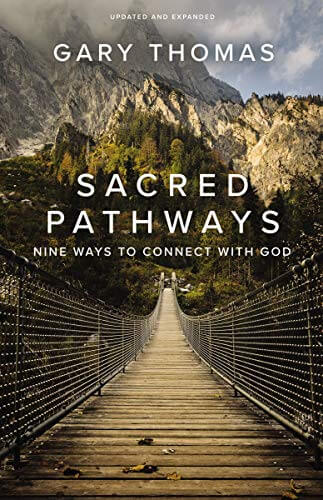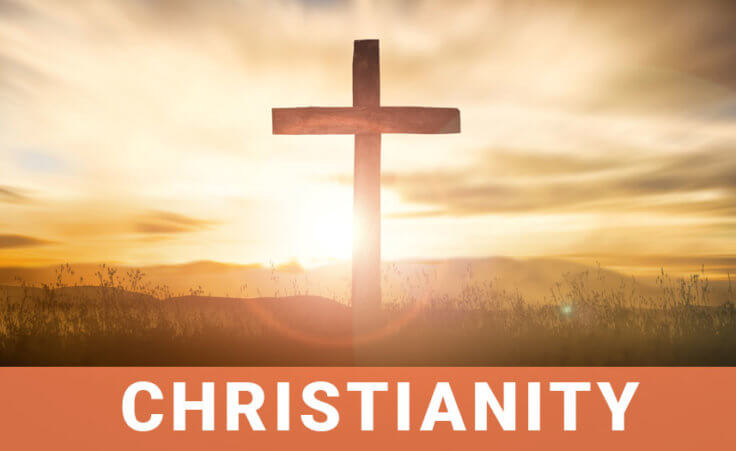
© Olena Bloshchynska /stock.adobe.com
Gary Thomas is a bestselling author and international speaker. He is especially known for uniting Scripture, church history, and Christian classics to encourage spiritual growth and deeper relationships within the body of Christ.
His classic on spiritual growth, Sacred Pathways: Nine Ways to Connect with God, recently caught my eye. I found it to be both profound and powerfully practical.
 He begins by acknowledging the “quiet time” spiritual discipline that became popular in the 1970s and 1980s, comprised of time spent in Bible study, prayer, worship, and intercession. While this has been helpful to many Christians (myself included), Thomas notes that it can become restrictive and legalistic. He likens it to eating the same foods or running the same routes every day.
He begins by acknowledging the “quiet time” spiritual discipline that became popular in the 1970s and 1980s, comprised of time spent in Bible study, prayer, worship, and intercession. While this has been helpful to many Christians (myself included), Thomas notes that it can become restrictive and legalistic. He likens it to eating the same foods or running the same routes every day.
Rather, Thomas notes, “God wants your worship, according to the way he made you. Your worship may differ somewhat from the worship of the person who brought you to Christ or the person who leads your Bible study or church. . . . Good spiritual directors understand that people have different spiritual temperaments, that what feeds one doesn’t feed all. Giving the same spiritual prescription to every struggling Christian is no less irresponsible than a doctor prescribing penicillin to combat every illness.”
By contrast, he discovered a variety of spiritual temperaments in Scripture, from Mary sitting contemplatively at Jesus’ feet to Moses and Elijah’s activism, Abraham’s altar building, and Mordecai’s care for others.
He noted a variety of such temperaments in Christian history as well, from Roman Catholic worship focused on the altar to Protestant focus on the pulpit, Calvinists’ emphasis on transforming society, Anabaptists’ separatism and pacifism, and Orthodoxy’s “very sensuous worship service” with bells, incense, and colorful clothing and surroundings.
And he accessed personality types as identified in the well-known Myers-Briggs test. Combining personality temperaments, historic church movements, and biblical figures, he identifies nine spiritual temperaments he calls “sacred pathways.”
What are the nine “sacred pathways”?
Thomas notes that while none of us is limited to a single “pathway” to God, most of us “will naturally have a certain predisposition for relating to God, which is our predominant spiritual temperament.”
Here’s his list:
- Naturalists: Loving God outdoors. These Christians are especially drawn to God through the beauty and awesomeness of nature.
- Sensates: Loving God with the senses. These believers “want to be lost in the awe, beauty, and splendor of God. They are drawn particularly to the liturgical, the majestic, the grand.”
- Traditionalists: Loving God through ritual and symbol. These Christians “have a need for ritual and structure” and are drawn to liturgy and order.
- Ascetics: Loving God in solitude and simplicity. Such Christians “live a fundamentally internal existence” and love to focus on the Lord in prayer, fasting, and other solitary disciplines.
- Activists: Loving God through confrontation. These believers “serve a God of justice” and define worship as “standing against evil and calling sinners to repentance.” They are often committed to activistic causes such as the pro-life movement or other social issues.
- Caregivers: Loving God by loving others. Like Mother Teresa, they love and serve God by serving those in need, often at great personal sacrifice.
- Enthusiasts: Loving God with mystery and celebration. These Christians seek “excitement and mystery in worship” and are “inspired by joyful celebration.”
- Contemplatives: Loving God through adoration. Like Mary of Bethany, they focus on loving God with “the purest, deepest, and brightest love imaginable.”
- Intellectuals: Loving God with the mind. Such Christians “live in the world of concepts” and “may feel closest to God when they first understand something new about him.” Thomas cites J. I. Packer as a popular example.
Two reflections
The remainder of the book describes these “pathways” in biblical, historical, and contemporary detail and offers strengths and temptations to each approach to God. Thomas includes ways to score our affinity for the various approaches and encourages us to have grace for those whose pathways are different from our own. His book closes with questions for discussions and reflection.
For our purposes, we can identify the “sacred pathway” that is our “predominant spiritual temperament” this way: Thomas suggests that we “list those Christians whom you most admire and seek to emulate. How would you describe each one? If you consistently find yourself picking leaders of a particular spiritual temperament, you may share that makeup.”
He also suggests that we identify that practice to which we turn in times of challenges or opportunities. When you most need to meet with your Lord, what do you do?
Upon reading his book, two reflections followed for me.
One: It is encouraging to see the entire body of Christ expressed in the various ways Christians meet with God.
As Paul noted, “If the whole body were an eye, where would be the sense of hearing? If the whole body were an ear, where would be the sense of smell?” (1 Corinthians 12:17). We should be grateful for pathways to God that are not our own, knowing that the Spirit is using them to bring the entire family of faith closer to our Father.
Two: It is vital that we meet God in ways that are aligned with our created design. This means knowing who we are in Christ and knowing which ways to God are most powerful for us.
The great evangelist Dwight Moody was once accosted by a woman who said, “I don’t like your evangelistic methods.”
Moody replied, “I don’t like them much, either. What are yours?”
She stammered and admitted that she had none.
Moody then said, “I like mine better than yours.”
The Holy Spirit is drawing Christians out of the Western compartmentalization of spiritual vs. secular into a holistic commitment to Christ as Lord. Nothing less is sufficient for the challenges and opportunities of the hour.
Which pathway will you follow to God today?












